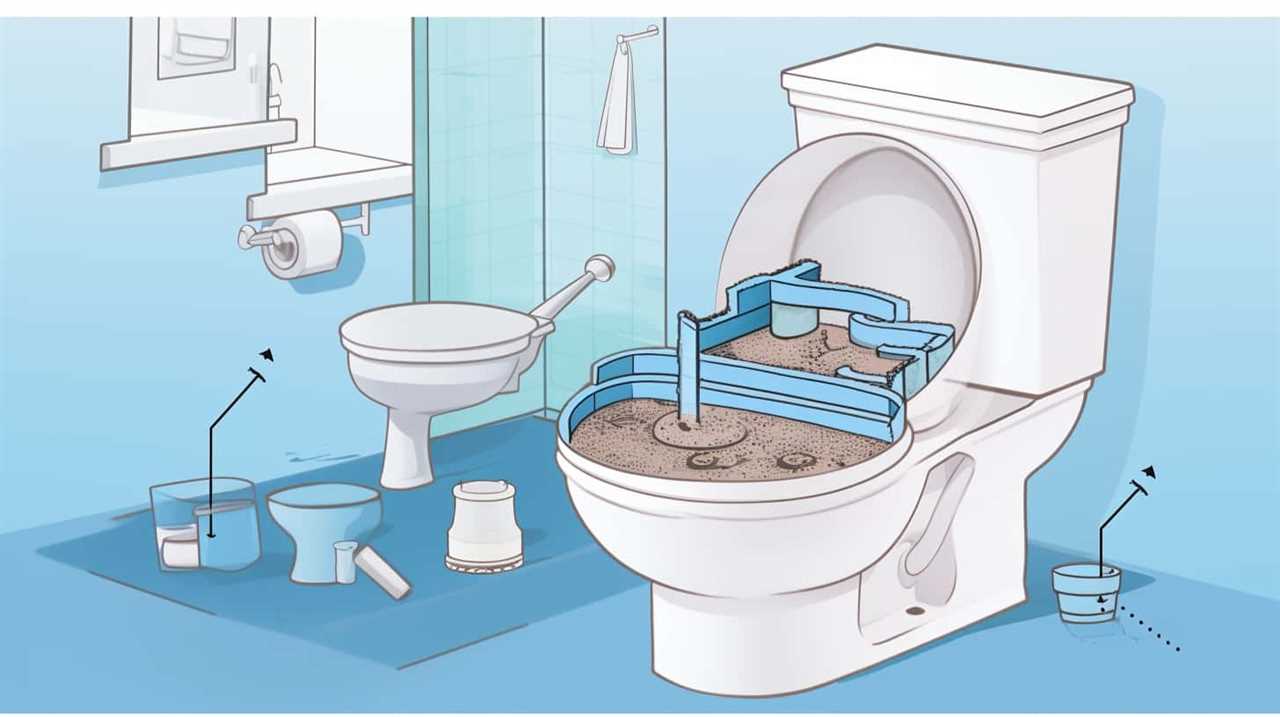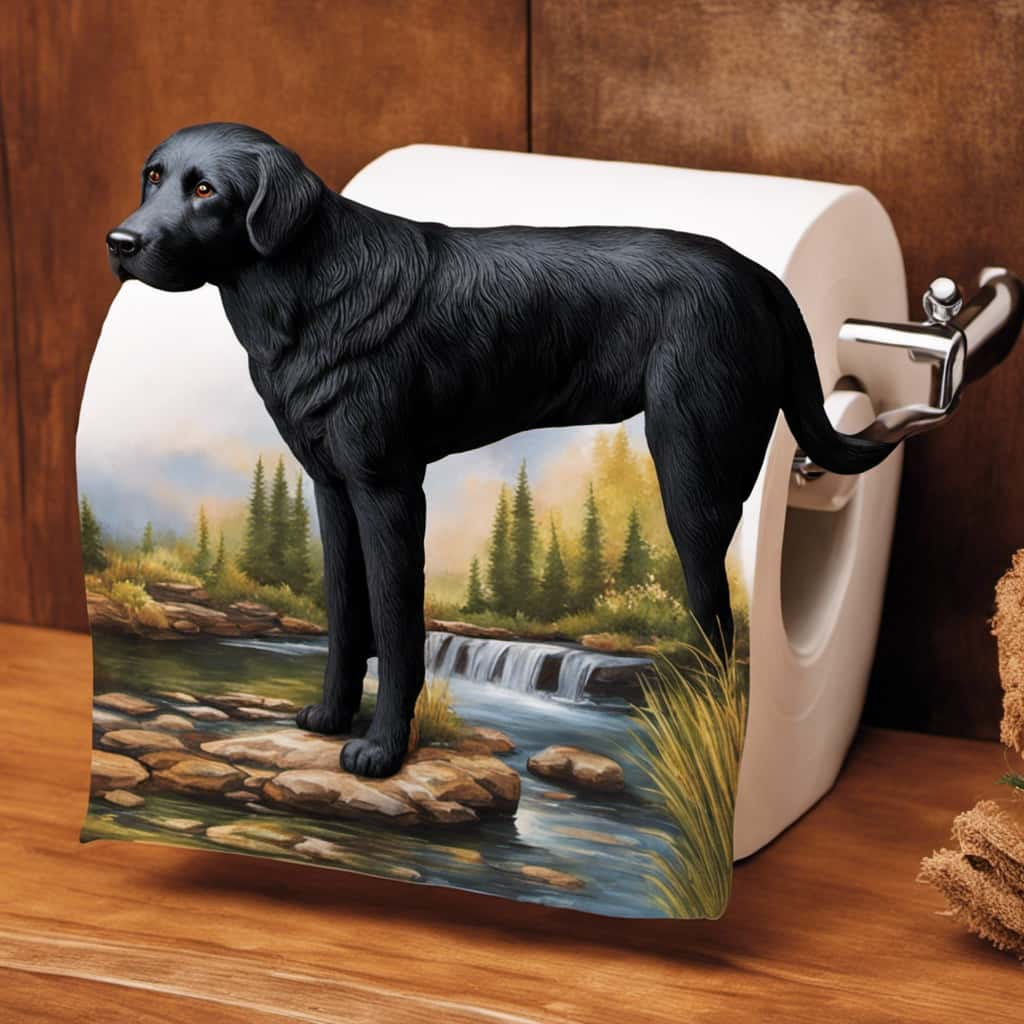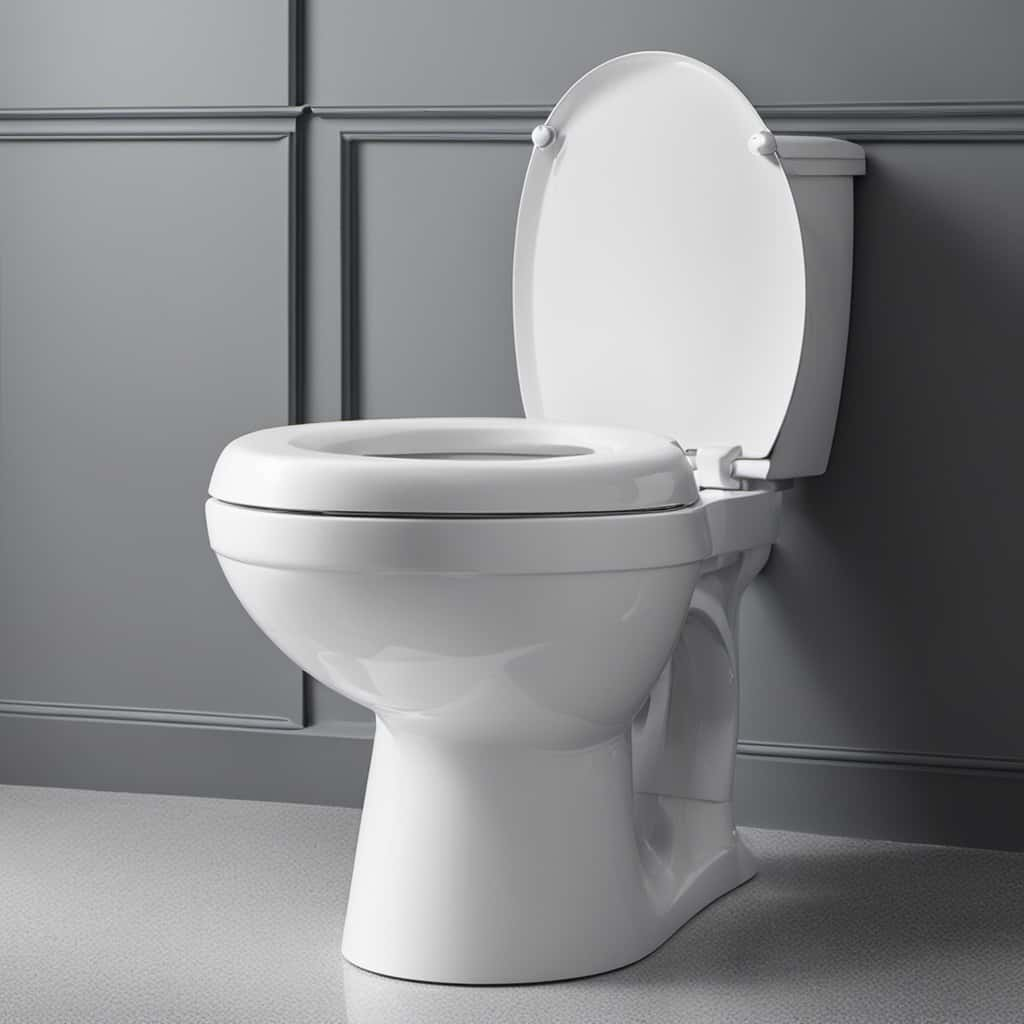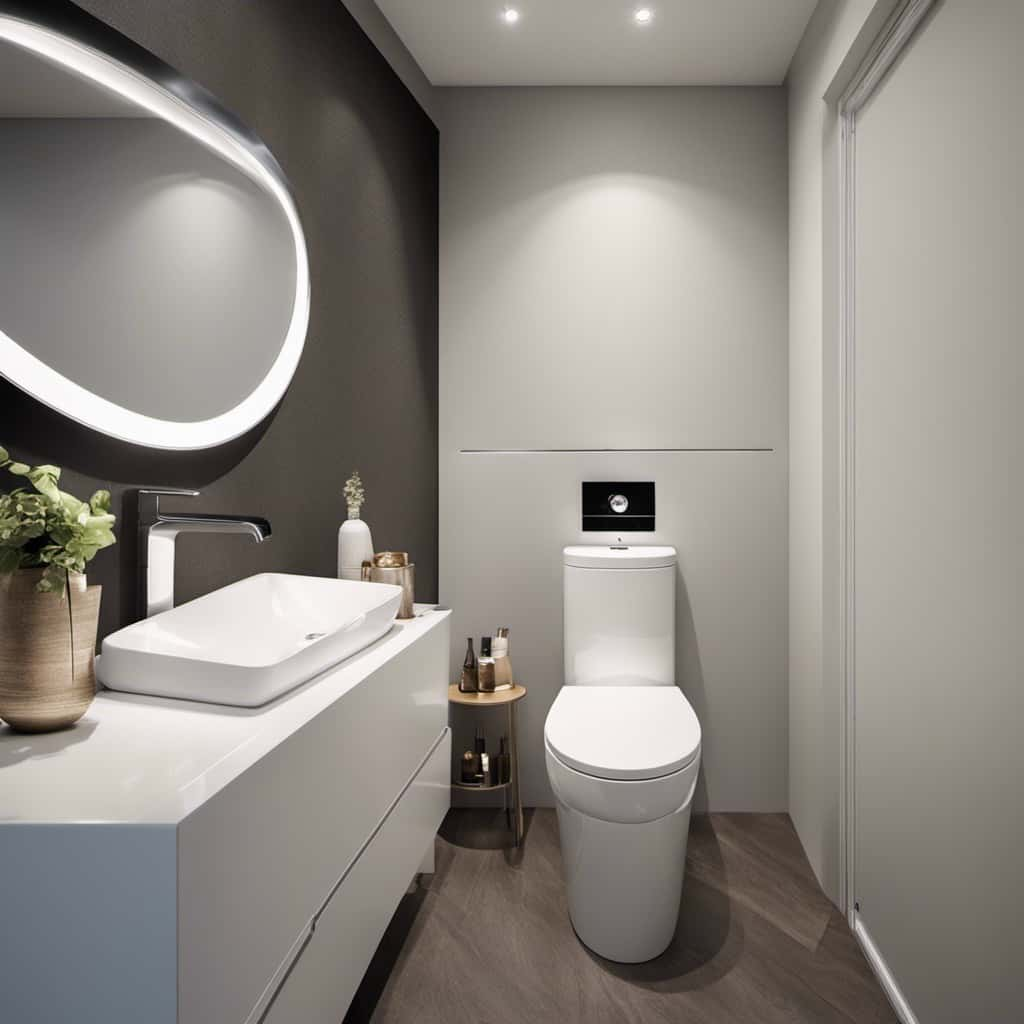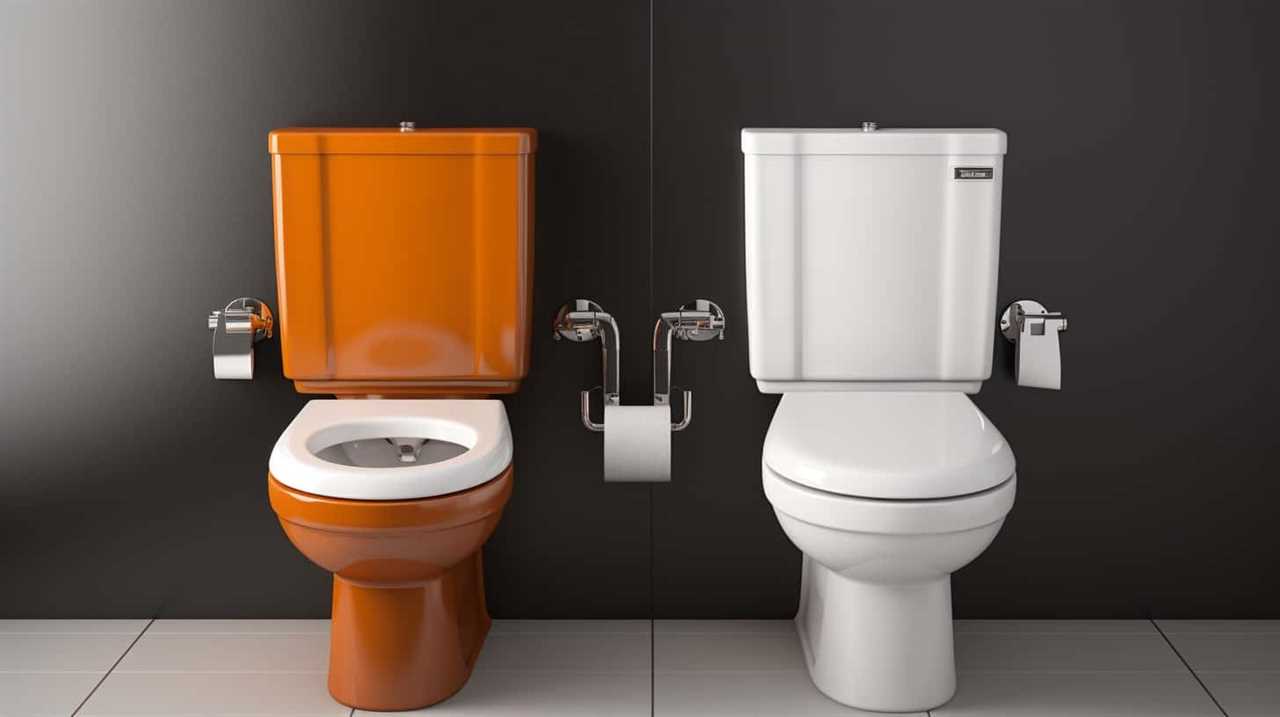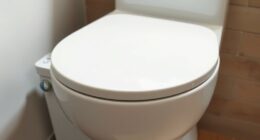Ah, the pleasures of winter! While we cozy up under blankets and enjoy hot cocoa, the question arises: is it safe to flush the toilet when our pipes are frozen? Despite it seeming like a simple action, the potential risks may be more significant than anticipated.
In this article, we’ll explore the signs of frozen pipes, the dangers of flushing a frozen toilet, and the steps to safely navigate this icy predicament.
So, grab your thermos and let’s dive into the world of frozen pipes and flushing toilets!
Key Takeaways
- Lack of water flow or reduced water pressure are signs of frozen pipes.
- Thawing techniques such as using a hairdryer or heat gun can help unfreeze pipes.
- Flushing a frozen toilet can cause burst pipes due to increased pressure.
- It is important to understand the risks and consider calling a professional plumber for persistent or worsening problems.
Signs of Frozen Pipes
One of the first signs of frozen pipes is a lack of water flow in our household plumbing. When the pipes freeze, the water can’t pass through, resulting in reduced or no water flow in our faucets, toilets, and showers. This is often accompanied by a decrease in water pressure or completely no water coming out.
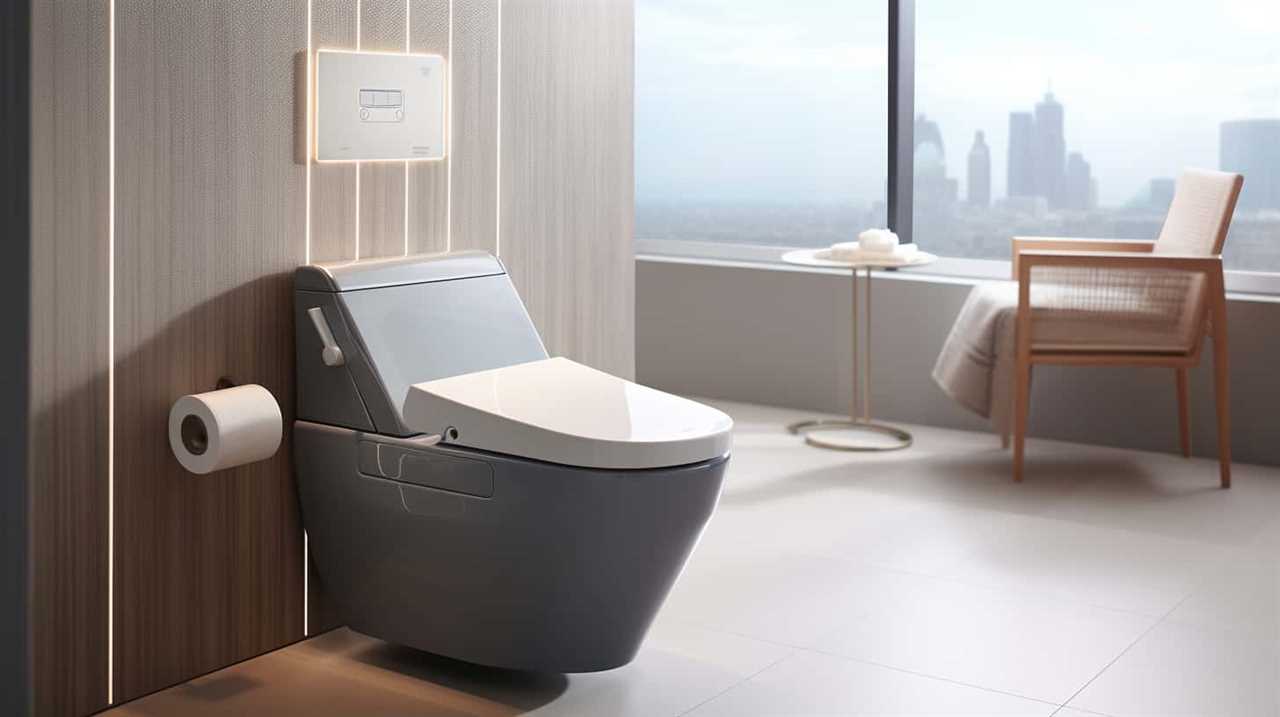
To address this issue, there are several thawing techniques and DIY solutions available. One common method is using a hairdryer or heat gun to gently warm the frozen pipes. Another option is to wrap the pipes with heating tape or use a space heater in the area where the pipes are located. It’s important to follow these thawing techniques carefully to avoid causing further damage to the pipes.
Now, let’s move on to discussing the risks of flushing a frozen toilet.
Risks of Flushing a Frozen Toilet
Flushing a frozen toilet can pose significant risks if the pipes are already frozen. It’s crucial to understand the consequences before attempting to flush a frozen toilet. Here are the risks involved:
- Increased blockages: Flushing a frozen toilet can cause additional debris to accumulate and further clog the already frozen pipes. This can exacerbate the problem and make it even more difficult to thaw the pipes.
- Pipe bursts: The pressure created by flushing a frozen toilet can cause the frozen pipes to burst. This can result in water damage to your property and require expensive repairs.
- Risks of using hot water: Some people may consider using hot water to thaw the pipes. However, this can cause the sudden expansion of the frozen pipes, leading to cracks or bursts.
- Contamination: Flushing a frozen toilet can cause wastewater to back up into your home, leading to unsanitary conditions and potential health risks.
Understanding these risks can help you make an informed decision about whether to attempt flushing a frozen toilet or seek professional assistance.
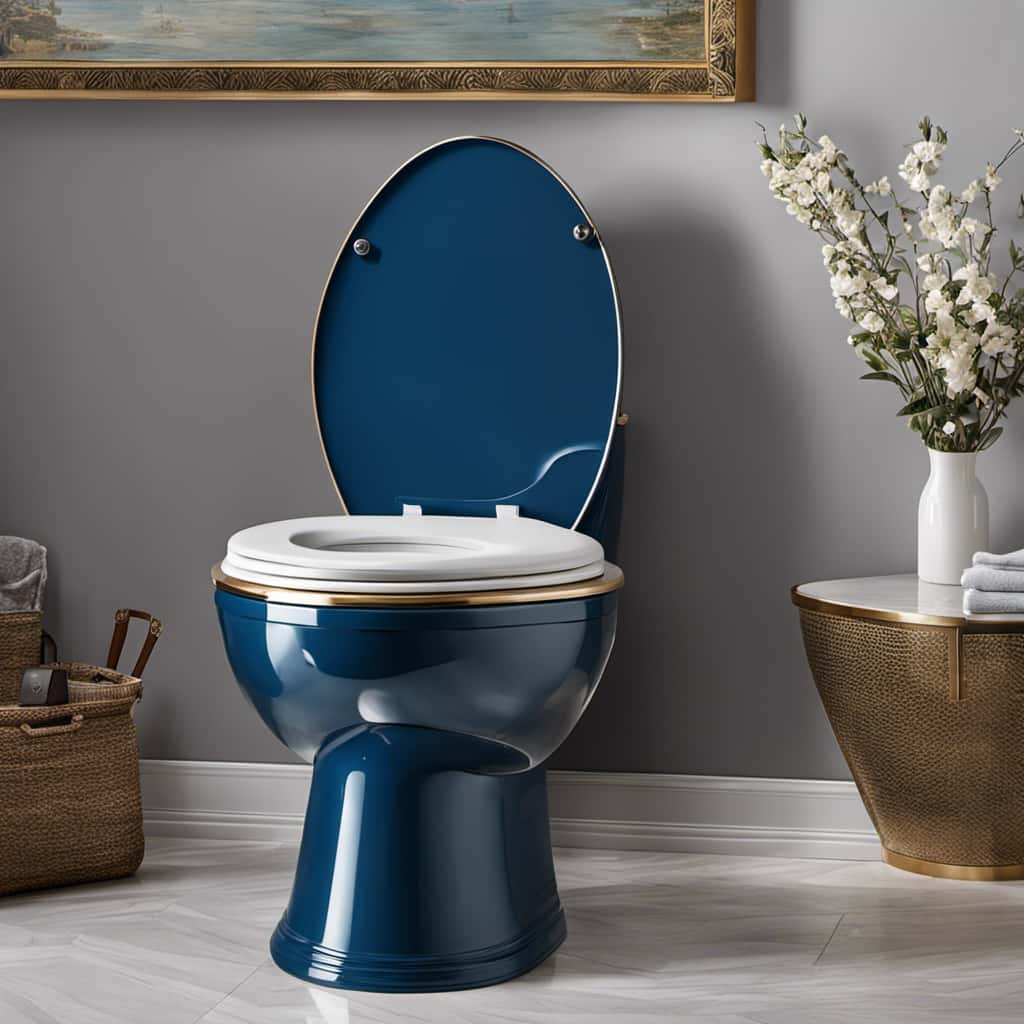
Steps to Safely Flush a Frozen Toilet
To safely flush a frozen toilet, we can take a few simple steps.
Firstly, it’s important to identify the cause of the frozen pipes. Common causes include cold weather, inadequate insulation, and a lack of heat in the area where the pipes are located.
Once the cause is determined, we can proceed with the thawing methods. One effective method is to use a hairdryer on a low heat setting to warm the pipes gradually.
Another method involves applying hot water or a heating pad directly to the frozen section. It’s crucial to avoid using open flames or excessive heat, as this can damage the pipes.
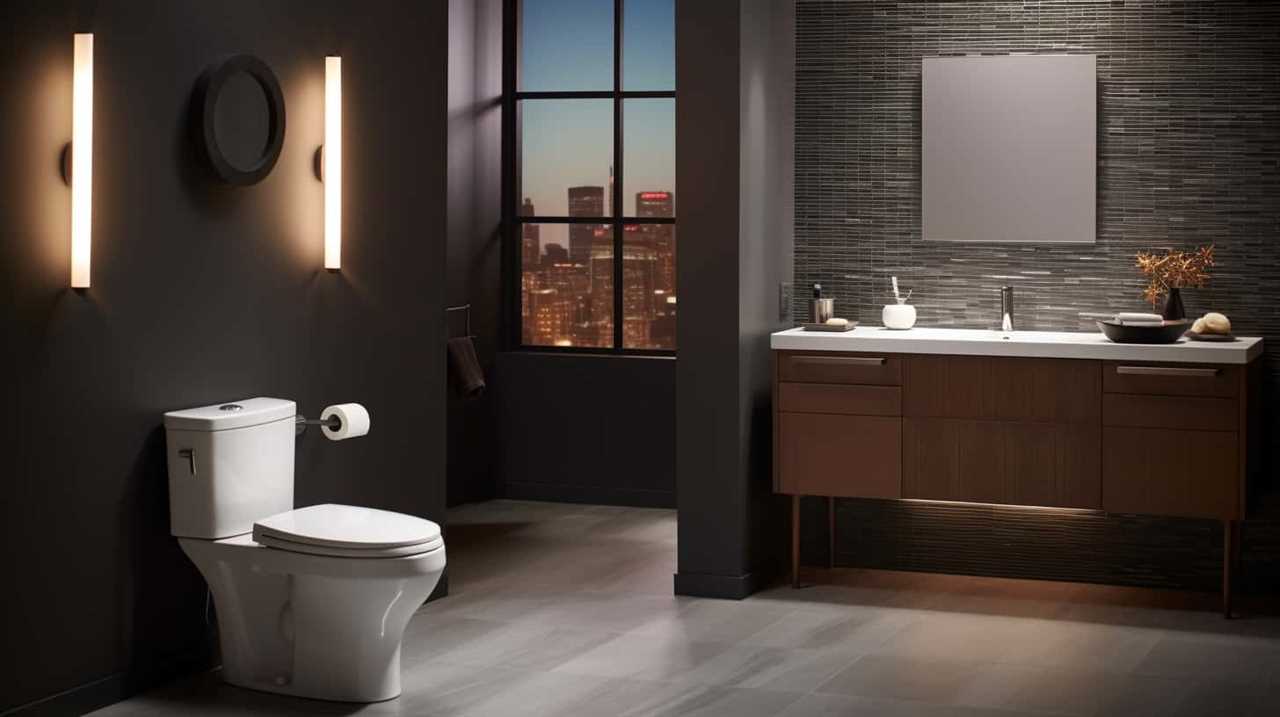
After thawing the pipes, the toilet should be able to flush normally. Remember to insulate the pipes to prevent future freezing.
Preventing Frozen Pipes in the Future
To prevent frozen pipes in the future, we need to take proactive measures to insulate and protect them from extreme temperatures. Here are four steps to help you prevent frozen pipes:
- Insulate pipes for winter: Use pipe insulation sleeves or heat tape to wrap exposed pipes, especially those in unheated areas such as basements, crawl spaces, and attics. This will help retain heat and prevent freezing.
- Seal air leaks: Identify any gaps or cracks in the walls, floors, or ceilings near your pipes and seal them with caulk or insulation. This will prevent cold air from entering and affecting the pipes.
- Keep the heat on: Maintain a consistent temperature in your home, even when you’re away. Set your thermostat to a minimum of 55 degrees Fahrenheit to ensure the pipes stay warm enough.
- Open cabinet doors: During extremely cold weather, open the cabinet doors under sinks to allow warm air to circulate around the pipes.
When to Call a Professional Plumber
After taking proactive measures to prevent frozen pipes, such as insulating and sealing air leaks, it’s important to know when it’s necessary to call a professional plumber.
While DIY plumbing solutions can be effective in some cases, there are situations that require the expertise of a professional.
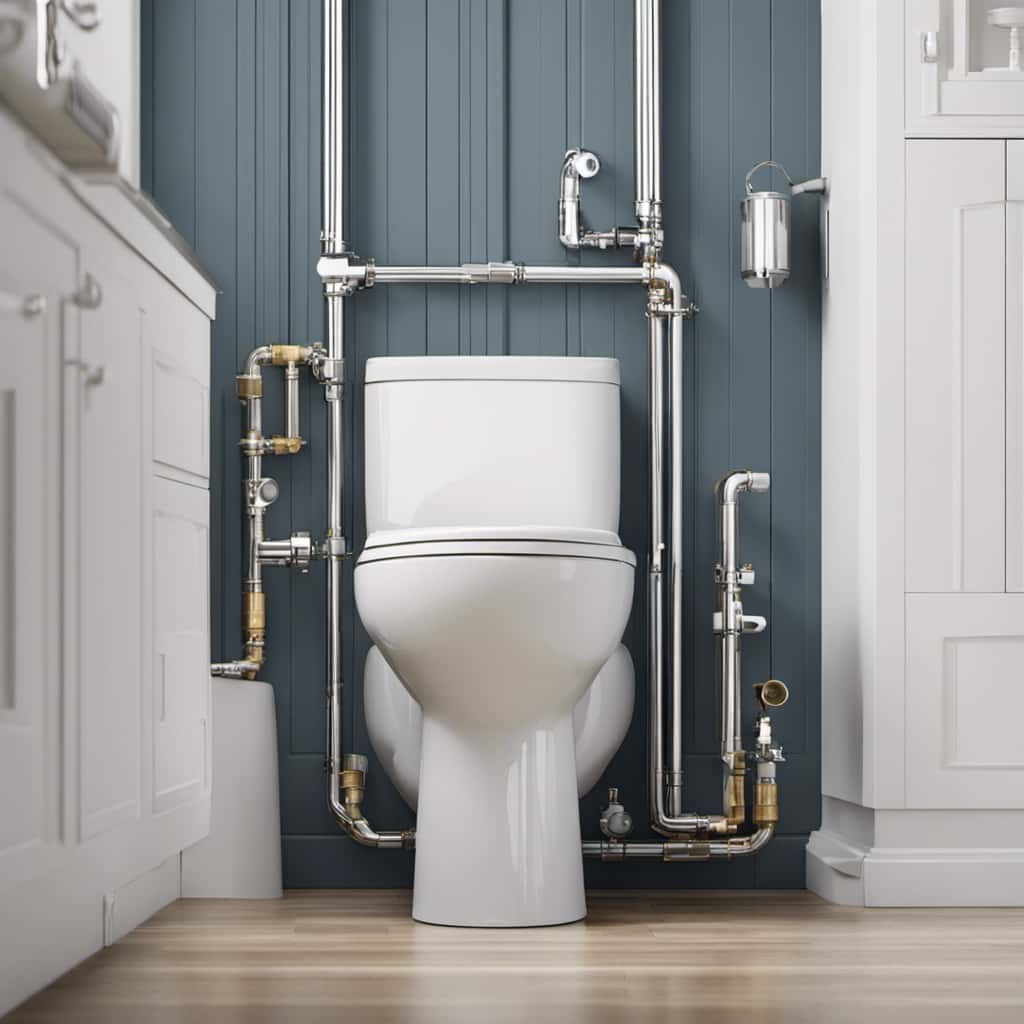
One such situation is when you encounter a burst pipe. Burst pipes can cause significant water damage and should be addressed immediately.
Another instance when calling a professional plumber is necessary is when you’re dealing with a sewage backup. This can be a health hazard and requires emergency plumbing services to ensure proper cleanup and repair.
Additionally, if you have tried DIY methods and the problem persists or worsens, it’s best to call a professional plumber who’s the knowledge and tools to accurately diagnose and fix the issue.
Frequently Asked Questions
What Are the Common Signs of Frozen Pipes?
Yes, you can flush the toilet if the pipes are frozen. However, it’s important to thaw the pipes first using appropriate thawing methods to avoid the consequences of frozen pipes.
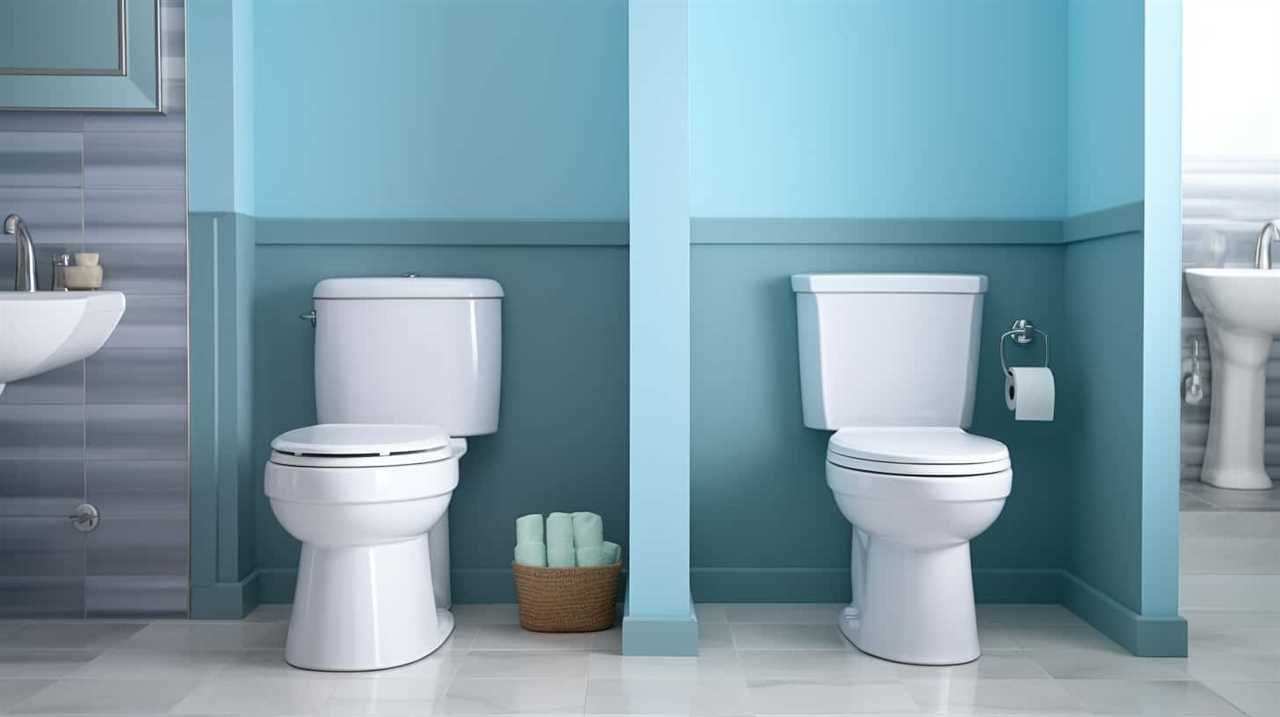
Can Flushing a Frozen Toilet Cause Any Damage to the Plumbing System?
Flushing a frozen toilet can potentially cause damage to the plumbing system. Before attempting to flush, it is important to take precautions such as thawing the pipes and ensuring they are not cracked or damaged.
How Can You Safely Flush a Toilet if the Pipes Are Frozen?
To safely flush a toilet when pipes are frozen, we must first thaw the pipes. Attempting to flush a frozen toilet can cause damage to the plumbing system. Consider alternative bathroom solutions until the pipes are thawed.
What Steps Can Be Taken to Prevent Pipes From Freezing in the Future?
To prevent pipes from freezing in the future, we recommend insulating pipes for winter by using materials like foam or insulation sleeves. Another option is to use heat tape, which provides continuous heat to prevent pipe freezing.
When Should You Call a Professional Plumber for Assistance With Frozen Pipes?
When to hire a plumber for frozen pipes? Look for signs like no water or low water pressure. If unsure, call a professional. Don’t risk DIY solutions. We have the expertise to fix it.
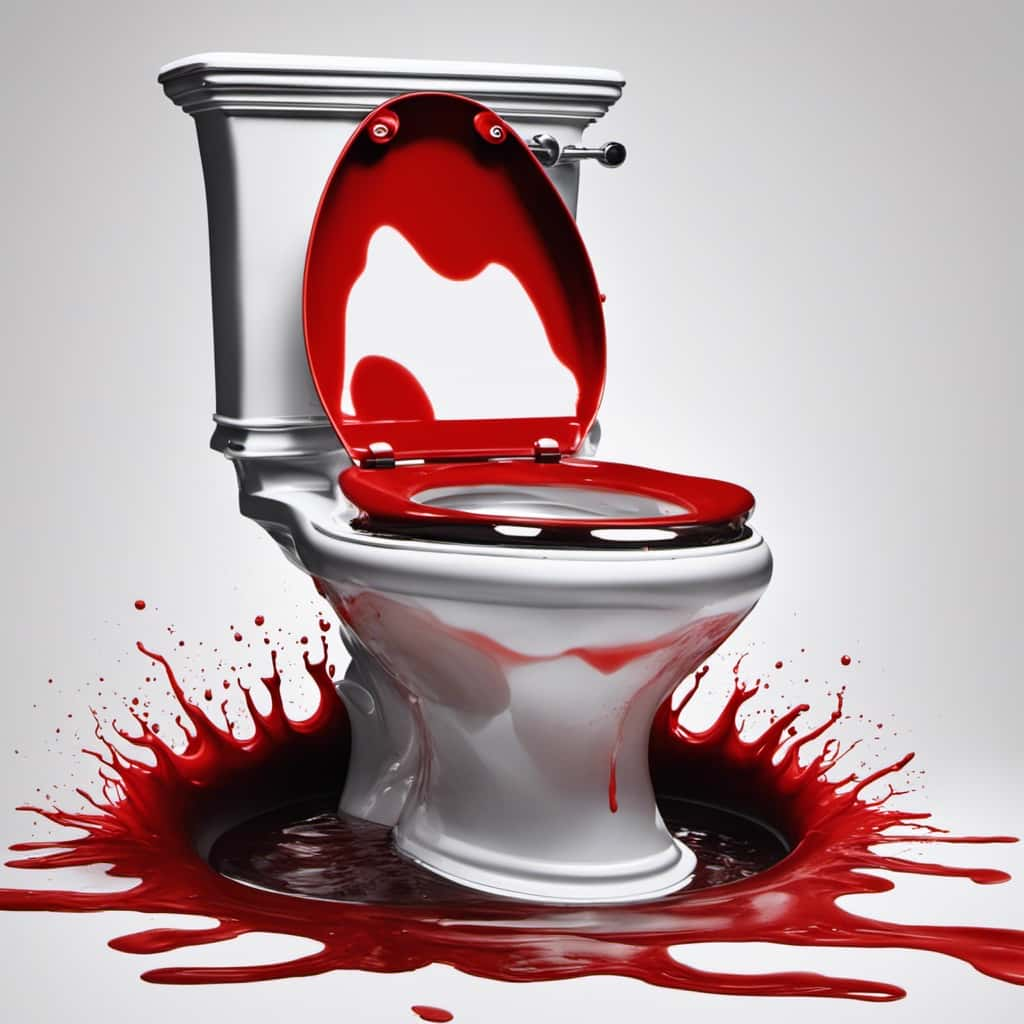
Conclusion
In the chilly battle between frozen pipes and a functioning toilet, remember to tread carefully.
Flushing a frozen toilet can lead to disastrous consequences, such as bursting pipes and water damage. It’s crucial to take the necessary steps to safely thaw the pipes before attempting to flush.
By preventing frozen pipes in the future, you can avoid this icy dilemma altogether.
If in doubt, don’t hesitate to call a professional plumber to ensure a smooth and trouble-free plumbing experience.
